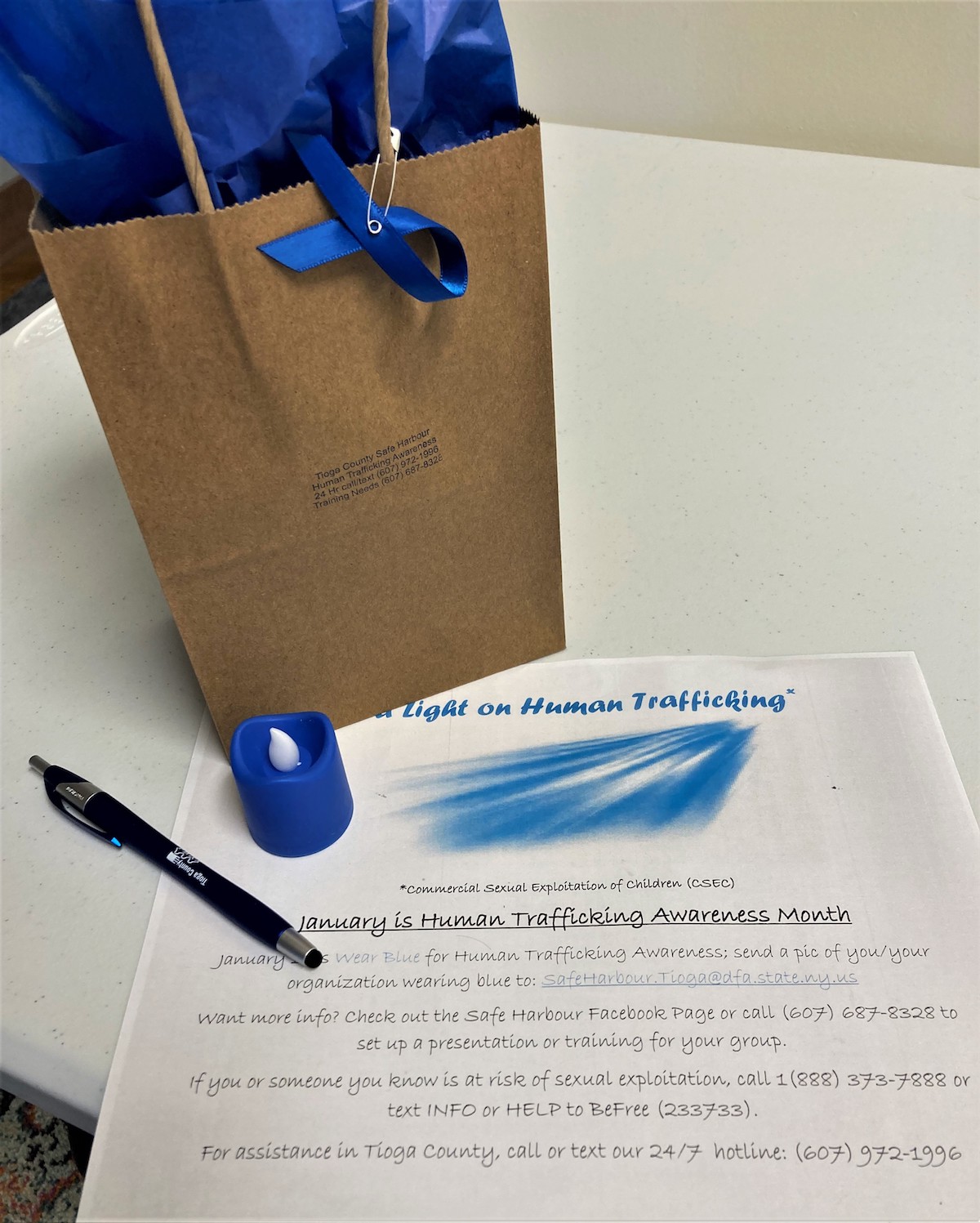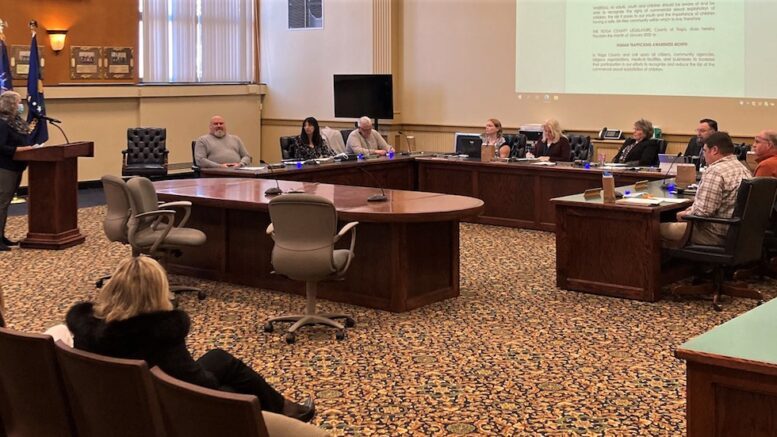The month of January is Human Trafficking Awareness Month.
The subject of human trafficking has been in the national spotlight recently due to the highly publicized case of Jeffrey Epstein, a billionaire financier, now deceased, who had been charged with sex trafficking. Epstein’s socialite partner, Ghislaine Maxwell, was convicted last month and incarcerated for assisting Epstein’s abuse of minors.
Human trafficking, however, is not just an issue of the rich and famous. It occurs in all communities, whether it is in a metropolitan city or in a rural setting. It is an issue, too, in Tioga County, N.Y.
According to the Department of Homeland Security, human trafficking is defined as the use of force, fraud or coercion to obtain some type of labor or commercial sex act.
In a special guest editorial for the Owego Pennysaver earlier this month, Sarah DiNunzio, assistant director at A New Hope Center in Owego, remarked, “For many, the idea that human trafficking occurs in our local community does not seem feasible, and we assume it happens only to people in urban areas or to people being transported across national borders,” and added, “For us to address human trafficking, we must recognize what it is and acknowledge its existence in our rural area.”
Within Tioga County, a number of schools, local and county organizations and nonprofits, the District Attorney’s office and others, meet quarterly to address the issue via the Safe Harbour NY program.
DiNunzio, along with Jennifer Green, Safe Harbour coordinator, gave a presentation about the issue to the Tioga County Legislature at their Jan. 11 meeting.
It is Green’s goal to broaden the awareness reach in the future. Safe Harbour will work to encourage small businesses, coaches, parent groups and others to participate. Another reach, Green said, will be to share risk factors and information with area hotels, which are typical hot spots for traffickers.
For both Green and DiNunzio, another goal is, “Aiming to prevent sexual exploitation,” while also raising awareness and identifying and responding to at-risk and trafficked youth.
Referrals to Safe Harbour have increased, Green said, which is a positive reflection that the message is getting out.
Human trafficking can happen to anyone, but more for those in vulnerable situations. At risk are those under age 18, runaway and homeless youth, young people in the social services or juvenile justice systems, and LGBTQ.
Examples of human trafficking in rural communities encompass such situations as youth trading sex for a place to sleep, for drugs, or for anything else of value. In some cases youth are manipulated by their romantic partners, or are pressured to have sex with others in order to provide for their family.
Green shared, “It’s not the ‘stranger danger’ message that is predominate in these cases,” and further explained that the exploiter is often someone the young person knows and has developed a trusting relationship with.
Both Green and DiNunzio acknowledged that social media is a factor that feeds the issue. The Apps used by youth frequently change which makes it more challenging, and then savvy young people often find clever ways to access the internet.
DiNunzio shared, “Traffickers can groom and recruit youth to become victims through use of social media on mobile phone apps and online websites.”
The exploitation could come from, for example, a trafficker offering to give a young person a ride in exchange of a picture or video of themselves, and not always for sex.
Human trafficking has proven to be “pandemic proof” as well. Young people have had more unsupervised time on their devices, and thus approached more by predators on-line. Economic instability has also increased human trafficking.
The Tioga County Safe Harbour program invites the public to join their local campaign, “Shed Light on Trafficking.”

The Tioga County Safe Harbour program invites the public to join their local campaign, “Shed Light on Trafficking.” To participate, you can display a blue light in your home, workplace, or place of worship. Lights are available at the Tioga County Health and Human Services Building, the Tioga County Child Advocacy Center, and A New Hope Center. Provided photo.
To participate, you can display a blue light in your home, workplace, or place of worship. Tioga County Safe Harbour is distributing free blue lights and information about trafficking to all community members. Lights are available at the Tioga County Health and Human Services Building, the Tioga County Child Advocacy Center, and A New Hope Center.
Contact Tioga County Safe Harbour at (607) 687-8328 or via email to Safe.Harbour.tioga@dfa.state.ny.us; or, A New Hope Center at (607) 687-6866 or via text at (607) 972-1996 to make a referral, to arrange a community presentation, or for more information about their efforts.
On a national level, the Polaris Project, a non-profit headquartered in Washington, D.C., works to end human trafficking by tackling the underlying patterns of exploitation and, in turn, change the power dynamics that allow it to happen. Find more information at polarisproject.org.
If you believe a youth is in immediate danger, do not intervene and call 911. You can report suspected trafficking to the National Human Trafficking Resource Center 24/7 by calling 1-888-373-7888 or text INFO or HELP to BeFree (233733).



Be the first to comment on "Putting a local spotlight on human trafficking awareness"